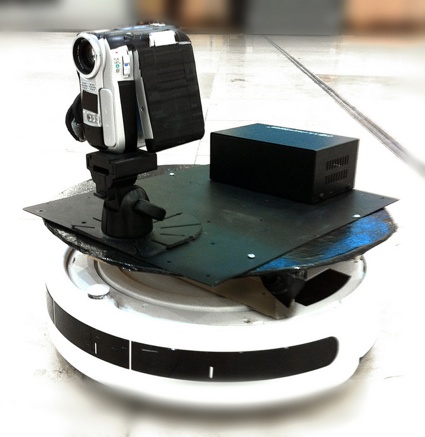This is already the fifth episode of the art and science show i’ve been recording for ResonanceFM! It broadcasts today Monday 18 June at 16.30 (GMT.) There will be a repeat on Thursday at 22.30. You can catch it online if you don’t live in London. And of course we will have podcasts (still waiting for them.)
 UNCERTAIN SUBSTANCE: The Lewisham Roomba
UNCERTAIN SUBSTANCE: The Lewisham Roomba
Today i’m talking to Tom Keene, an artist whose work investigates technological objects and attempts to understand their agency and how they act as mechanisms of control within contemporary society. I met Tom at a conference about Interactivity a few months ago and he was the one guy in the panel who added a social and sometimes even political perspective on interactivity and on technology in general.
Right now Tom is completing an MA in Interactive Media, a course that merges Critical Theory and Practice at Goldsmiths College. The course graduation show will open on 6th, 7th and 8th July. Tom will be showing “Uncertain Substance” – a speech recognition system that searches the radio waves for conversations about money!
Here’s the description of “Uncertain Substance” that Tom just sent me:
A speech recognition algorithm searches radio waves for conversations about money. As an ongoing investigation of the Viterbi algorithm this project seeks to understand the agency of a mathematical entity that operates as structural thread within the fabric of contemporary society.
Conceived in 1966 the Viterbi was originally used for digital signal processing where it detects and corrects errors in digital codes. Its use has subsequently extended through the technologies of speech recognition, DNA analysis, video encryption, deep space, and wireless communications systems. Physical manifestations of this algorithm exists as microchips installed in billions of mobile devices worldwide, enabling communications networks to permeate every conceivable space, blurring distinction between home, work and social environments.
Used to identify patterns and trends of human behaviour, the Viterbi plays a role in automated systems that interpret, record and report on human activity. These systems increasingly make economic decisions, govern response to crime, disaster, health and manage the everyday flow of cities. The Viterbi operates at a deep social level as it constructs new sets of social relations and radically shapes the development of our cities.
Today our conversation will focus on topics such as the social impact of the Viterbi algorithm (with a previous explanation on what the algorithm does exactly) and wireless infrastructures, the loss of public space in cities, in particular in London and in the area surrounding the Olympic sites.
